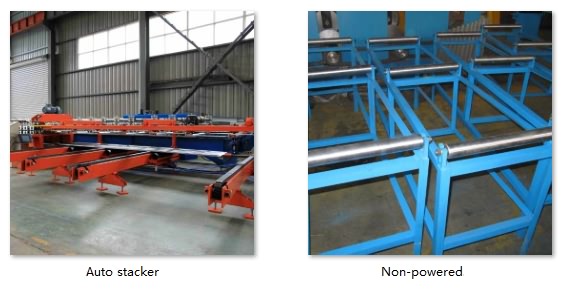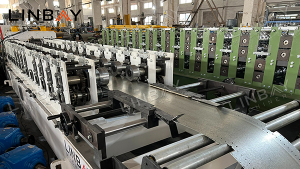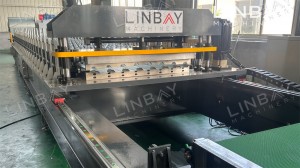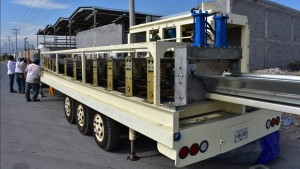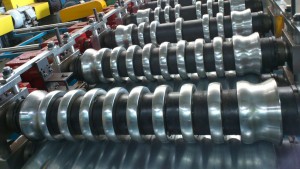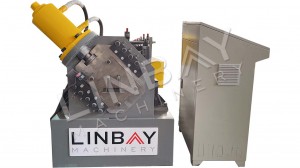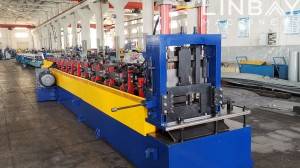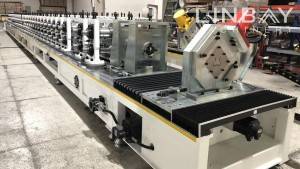video
Profile

The shelf panel is a crucial part of the racking system, designed to hold goods. It is generally made from galvanized steel with a thickness ranging from 1 to 2 millimeters. This panel is available in various widths and lengths, while its height remains constant. It also features a single bend along the wider side.
Real case-Main Techinical Parameters
Flow chart

Hydraulic decoiler with leveler--Servo feeder--Hydraulic punch--Guiding--Roll forming machine--Cutting and bending machine--Out table
Main Techinical Parameters
1. Line speed: Adjustable between 4-5 m/min
2. Profiles: Various widths and lengths, with a consistent height
3. Material thickness: 0.6-1.2mm (for this application)
4. Suitable materials: Hot rolled steel, cold rolled steel
5. Roll forming machine: Cantilevered double panel structure with a chain driving system
6. Cutting and bending system: Simultaneous cutting and bending, with roll former halting during the process
7. Size adjustment: Automatic
8. PLC cabinet: Siemens system
Real case-Description
Hydraulic Decoiler with Leveler

This machine combines a decoiler and a leveler, optimizing factory floor space and reducing land costs. The core expansion mechanism can adjust to fit steel coils with internal diameters between 460mm and 520mm. During uncoiling, outward coil retainers ensure the steel coil remains securely in place, enhancing worker safety.
The leveler flattens the steel coil, relieving internal stress and enabling more efficient punching and roll forming.
Servo Feeder & Hydraulic Punch

The hydraulic punch functions independently, separate from the roll forming machine's base. This design allows the roll forming machine to continue operating while punching is in progress, enhancing the overall efficiency of the production line. The servo motor minimizes start-stop time delays, providing precise control over the steel coil's forward length for accurate punching.
During the punching stage, notches are created in addition to the functional holes for screw installation. Since the flat steel coil will be shaped into a three-dimensional panel, these notches are precisely calculated to prevent overlapping or large gaps at the four corners of the shelf panel.
Encoder & PLC

The encoder transforms the detected length of the steel coil into an electrical signal, which is then transmitted to the PLC control cabinet. Within the control cabinet, parameters such as production speed, production quantity, cutting length, etc., can be precisely managed. Thanks to the precise measurement and feedback provided by the encoder, the hydraulic cutter can maintain cutting accuracy within ±1mm, minimizing errors.
Roll Forming Machine
Prior to entering the forming machine, the steel coil is guided through bars to maintain alignment along the centerline. Given the shape of the shelf panel, only the sides of the steel coil require forming. Therefore, we employ a double wall panel cantilever structure to reduce material usage, thereby saving on roller material costs. Chain-drive rollers exert pressure on the steel coil to facilitate its advancement and forming.
The forming machine is capable of producing shelf panels of different widths. By inputting the desired dimensions into the PLC control panel, the forming station automatically adjusts its position along rails upon receiving signals. As the forming station and roller move, the forming points on the steel coil change accordingly. This process enables the roll forming machine to efficiently produce shelf panels of various sizes.
An encoder is installed to detect the movement of the forming station, ensuring precise size adjustments. Furthermore, two position sensors—the outermost and innermost sensors—are employed to prevent excessive movement along the rails, thereby averting slipping or collisions among the rollers.
Cutting and Bending Machine
In this scenario, where the shelf panel necessitates a single bend on the wide side, we have engineered the cutting machine's mold to execute simultaneous cutting and bending.
The blade descends to perform the cutting, after which the bending mold moves upward, effectively completing the bending of the first panel's tail and the second panel's head in an efficient manner.
Other Type

If you're intrigued by shelf panels featuring two bends on the wide side, simply click on the image to delve deeper into the detailed production process and watch the accompanying video.
Key differences:
The double-bend type offers enhanced durability compared to the single-bend type, ensuring prolonged use. However, the single-bend type sufficiently meets storage requirements. Additionally, the edges of the double-bend type are not sharp, enhancing safety during usage, whereas the single-bend type may have sharper edges.
1. Decoiler
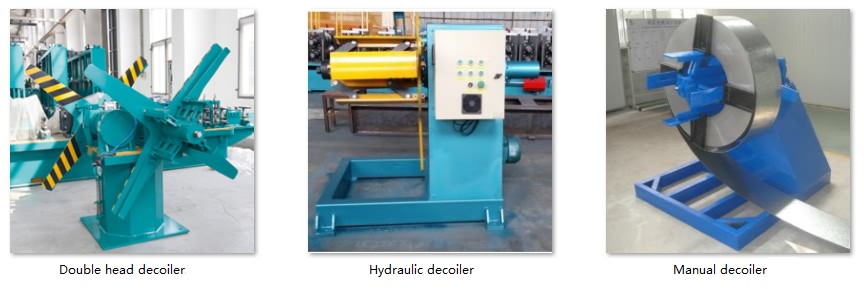
2. Feeding
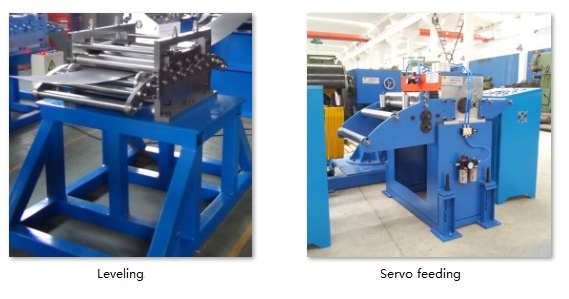
3.Punching
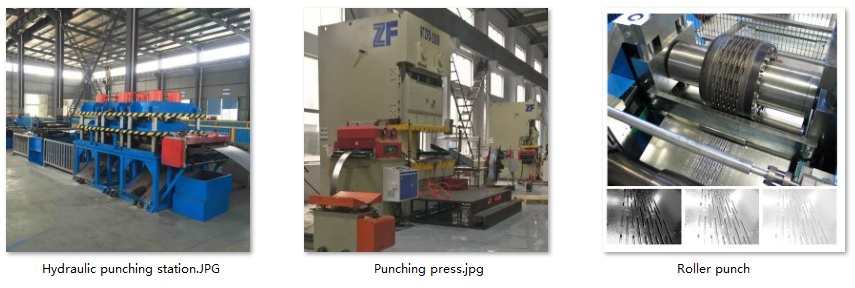
4. Roll forming stands

5. Driving system

6. Cutting system

Others

Out table
